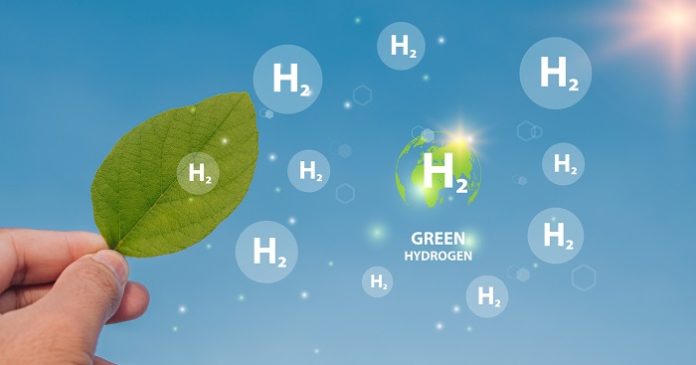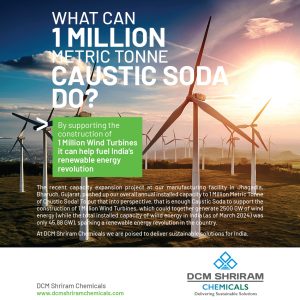Green hydrogen is set to become a cornerstone of the global energy transition, but the industry must be rigorously regulated to ensure that hydrogen production is truly green. A certifying agency, either at the national or global level, will be crucial for ensuring that the electricity powering electrolysers comes from renewable sources and for overseeing the cross-border trade of hydrogen.
Certifying Hydrogen’s Greenness
green hydrogen is rapidly gaining traction as a critical tool for decarbonising various sectors of the global economy. Produced through electrolysis, where water is split into hydrogen and oxygen using electricity, hydrogen is considered “green” only if the electricity used in the process comes from renewable energy sources like wind, solar, or hydropower. This distinction is crucial because hydrogen can also be produced using fossil fuels, which does not align with global climate goals.
Green Certification
The push for green hydrogen comes as industries and governments worldwide face increasing pressure to reduce greenhouse gas emissions in line with international climate agreements. With countries committing to net-zero emissions targets and transitioning away from fossil fuels, green hydrogen is expected to play a key role in sectors like transportation, heavy industry, and energy storage.
As this nascent industry grows, several questions arise around regulation and certification to ensure that the hydrogen being produced is genuinely “green.” Key issues include how to verify that the electricity powering electrolysers comes from renewable sources and whether an international certifying agency is needed to oversee the cross-border trade of green hydrogen.
Certification Challenges
One of the biggest regulatory challenges is ensuring that hydrogen produced through electrolysis qualifies as “green.” Simply put, for hydrogen to be labelled green, the electricity used must come exclusively from renewable energy sources. However, verifying this on a large scale and across different regions can be complex. This challenge is compounded by varying definitions of renewable energy and green hydrogen across countries.
Moreover, hydrogen production facilities often connect to national grids, where electricity from multiple sources (renewable and non-renewable) is pooled. Unless these facilities are directly connected to renewable energy sources like wind farms or solar panels, ensuring that the electricity used is green becomes difficult. Electrolysers connected to the national grid may draw from non-renewable sources during periods of low renewable energy supply, complicating the process of certifying hydrogen as green.
Certifying Agencies
Given these challenges, establishing a certifying agency to oversee the production and trade of green hydrogen is crucial. Such an agency would be responsible for establishing standards, tracking and verification, certification and cross-border trade.
The certifying agency must set clear and universally accepted standards for what qualifies as green hydrogen. These standards would define the acceptable sources of renewable electricity, the percentage of renewable energy required, and the emissions associated with hydrogen production.
The agency must develop robust systems for tracking the source of electricity used in electrolysers. This could involve real-time monitoring of energy inputs and the creation of traceability systems, such as renewable energy certificates (RECs), to verify the origin of the electricity.
Hydrogen producers must be certified to demonstrate that their production processes meet green hydrogen standards. The certifying agency would issue certificates or labels to hydrogen producers whose operations comply with the established criteria.
With hydrogen expected to become a globally traded commodity, the certifying agency would need to regulate the cross-border trade of green hydrogen. This would require harmonising regulations across different countries and creating systems to ensure that exported and imported hydrogen adheres to the same green standards.
Cross-Border Regulation
Green hydrogen will likely play a critical role in international trade, especially for countries rich in renewable energy resources that may export surplus hydrogen. However, certifying the green credentials of hydrogen across borders presents several challenges.
Countries may have differing standards for renewable energy and varying levels of grid integration with renewables. For example, a hydrogen producer in Country A may be connected to a grid with 90% renewable energy, while a producer in Country B may only have access to a grid with 50% renewable energy. Ensuring that hydrogen exported from one country and imported by another adheres to the same standards will require international cooperation and harmonisation.
One approach to regulating cross-border trade is to establish a global certifying body, akin to the International Renewable Energy Agency (IRENA) but focused specifically on green hydrogen. This agency could collaborate with national regulators and industry stakeholders to create global standards for certifying green hydrogen. Alternatively, regional certification bodies could work in collaboration with each other, with mutual recognition agreements ensuring that hydrogen certified in one region is recognised as green in another.
Current Status
Many countries have already taken significant steps toward developing green hydrogen certification frameworks, but approaches vary widely.
The EU is at the forefront of establishing a regulatory framework for green hydrogen. Its Clean Hydrogen Alliance and the Renewable Energy Directive (RED II) set out clear guidelines for hydrogen production using renewable energy. The EU is also developing a certification scheme known as the “CertifHy” system, which aims to provide a pan-Europe guarantee of origin for hydrogen produced from renewable energy sources.
In the U.S., the government is making large investments in green hydrogen through initiatives like the Department of Energy’s Hydrogen Energy Earthshot. While there is no formal federal certification scheme yet, individual states like California are working on regulations to certify hydrogen as renewable, largely driven by their ambitious decarbonisation goals.
Australia, with its abundance of renewable energy resources, is positioning itself as a major exporter of green hydrogen. The country’s government is developing a Hydrogen Guarantee of Origin scheme, which will provide internationally recognised certification for the hydrogen produced using renewable energy.
The development of green hydrogen certification is currently underway in India.The Ministry of New and Renewable Energy (MNRE) has released a draft proposal for the Green Hydrogen Certification Scheme. The Bureau of Energy Efficiency (BEE) would be the nodal authority to accredit agencies for monitoring, verifying, and certifying green hydrogen projects, as per the draft.
Global Certification
A global certifying agency for green hydrogen could play a critical role in the future of this industry. Much like how organisations like the International Energy Agency (IEA) or World Trade Organisation (WTO) set standards and facilitate international cooperation, a global certifying body could ensure uniformity in standards, facilitate cross-border trade, and prevent disputes over green hydrogen’s legitimacy.
This agency would need to work closely with national governments and industry groups to develop and enforce standards. It would also need to stay adaptable as the technology and market for green hydrogen evolve.
Epilogue
Green hydrogen is set to become a cornerstone of the global energy transition, but the industry must be rigorously regulated to ensure that hydrogen production is truly green. A certifying agency, either at the national or global level, will be crucial for ensuring that the electricity powering electrolysers comes from renewable sources and for overseeing the cross-border trade of hydrogen. Through global cooperation, harmonised standards, and innovative tracking systems, the green hydrogen industry can thrive while staying true to its sustainability promises.
Readers’ responses may be sent to: k.sahasranaman@gmail.com or chemindigest@gmail.com
































